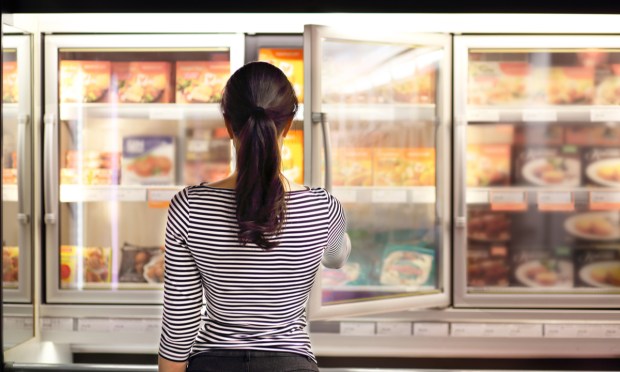Frozen Food Drives Sales at Discount Stores as Consumers Seek Easy Meals

Consumers’ demand for more affordable quick meal solutions is sending them running to the freezer aisle, Dollar Tree CEO Rick Dreiling notes.
On a call with analysts Thursday (May 25) discussing the retailer’s first quarter FY2023 financial results, Dreiling noted that the availability of frozen foods has had a dramatic effect on the amount that consumers purchase per trip.
“We have aggressively expanded our product assortment at Dollar Tree stores with $3, $4 and $5 frozen and refrigerated products, adding 3,500 stores last year alone on this initiative,” Dreiling said. “Both our Dollar Tree Plus and our multi-price frozen assortments drive incremental sales, with average ticket more than doubling at stores that we have added this expanded offering. Consumers are clearly responding, and these sales-driving initiatives are already having a measurable impact on our results.”
Dollar Tree is not the only discount retailer noting the advantages of offering more frozen foods. Competitor Dollar General’s CEO Jeff Owen shared on the company’s last earnings call in March that the retailer has placed a “focus on driving continued sales growth” in frozen and refrigerated foods and that it is “pleased with the performance” so far.
Indeed, demand for prepared food at retail stores is on the rise. Data from PYMNTS’ study “Connected Dining: Ready-to-Eat Meals are Eating Restaurants’ Lunch,” which draws from an April survey of more than 2,300 U.S. consumers, finds that 57% had bought ready-to-eat meals in the previous month. Moreover, more than 1 in 4 (28%) had done so at least once a week.
Nearly two-thirds had bought them at the grocery store, and 1 in 6 did so at convenience stores. Consumers cite both the increase in quality and assortment of prepared meals and a decrease in time to prepare their own meals as motivators for purchasing.
As such, many retailers — not only discount chains — have been expanding their selection. For instance, Giant Food recently debuted its first in-supermarket fast-casual restaurant, a Nalley Fresh location, with self-service ordering kiosks available. Similarly, Schnucks, a grocery retailer with 115 stores across four Midwestern states, is adding in-store salad bars to 22 locations to boost its prepared food offerings.
Food brands are noting this increased demand for quicker meal solutions as well. For instance, Mark Clouse, CEO of Campbell Soup Company, noted on the firm’s latest earnings call that consumers are less and less willing to spend long amounts of time preparing their food.
“What’s different than COVID now … is that the focus on … in-home meals revolve around both value and time to prepare,” Clouse said. “So the magic numbers on dinner are 20 minutes and the magic number on lunch is 10 minutes on speed.”
In a March interview with PYMNTS, Atul Sood, chief business officer at Kitchen United, the ghost kitchen and virtual food hall company behind grocery giant Kroger’s in-store multi-brand pickup and delivery restaurants, spoke to the consumer demand for more convenient food options at the supermarket.
“What we had as an initial hypothesis was that when consumers do shopping for the week, they don’t necessarily want to cook that night,” Sood explained. “That seems to be really clicking with consumers. As soon as they get educated about the option of ordering from restaurants in a grocery store, that repeat orders tend to be very high and consumer retention tends to be very strong.”

